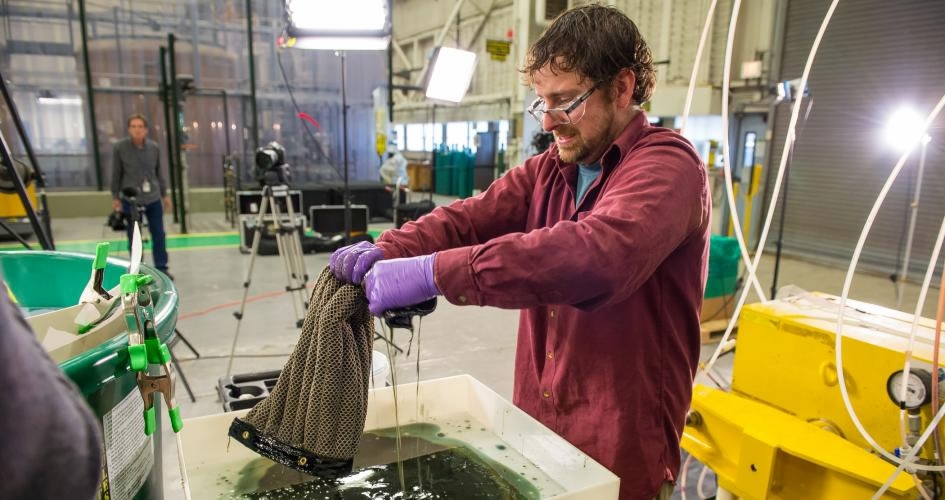A sponge that can quickly soak up oil in water has been devised by scientists in the United States.
The Oleo Sponge material, developed at Argonne National Laboratory (ANL), could eventually be used to help clean up oil spills, like the Deepwater Horizon disaster seven years ago that spewed millions of barrels of oil onto the shorelines of several American states for nearly three months.
The sponge is made of a polyurethane foam, like that used in mattresses. The foam's interior surfaces are covered with oleophilic (oil-attracted) molecules that draw oil from the water.

Argonne postdoctoral researcher Ed Barry wrings out a sheet of Oleo Sponge during tests at Argonne. / ANL Photo
In earlier research Seth Darling, a scientist with Argonne's Center for Nanoscale Materials, and ANL chemist Jeff Elam developed a technique called sequential infiltration synthesis (SIS), which infuses hard metal oxide atoms within complicated nanostructures.
The pair adapted the technique to grow a very thin layer of metal oxide primer close to the foam's interior surfaces. This helped glue the molecules, which hold onto the metal oxide layer with one end and grab oil molecules with the other.
The material can be wrung out in order to be reused.
It was tested inside a giant seawater tank in New Jersey at the National Oil Spill Response Research & Renewable Energy Test Facility, catching diesel and crude oil both below and on the water surface.

Oleo Sponge picks up oil during tests at Argonne. / ANL Photo
The Oleo Sponge could be scaled-up for use in large-scale oil leaks like that which occurred at Deepwater Horizon in April 2010 when a rig explosion killed 11 workers and spewed oil onto shorelines. It was the worst offshore oil disaster in US history.
The sponge could also potentially be used on a regular basis to clean harbors and ports, where diesel and oil accumulates from ship traffic.
The team is continuing to develop the technology.
(Source: Reuters)
10620km










